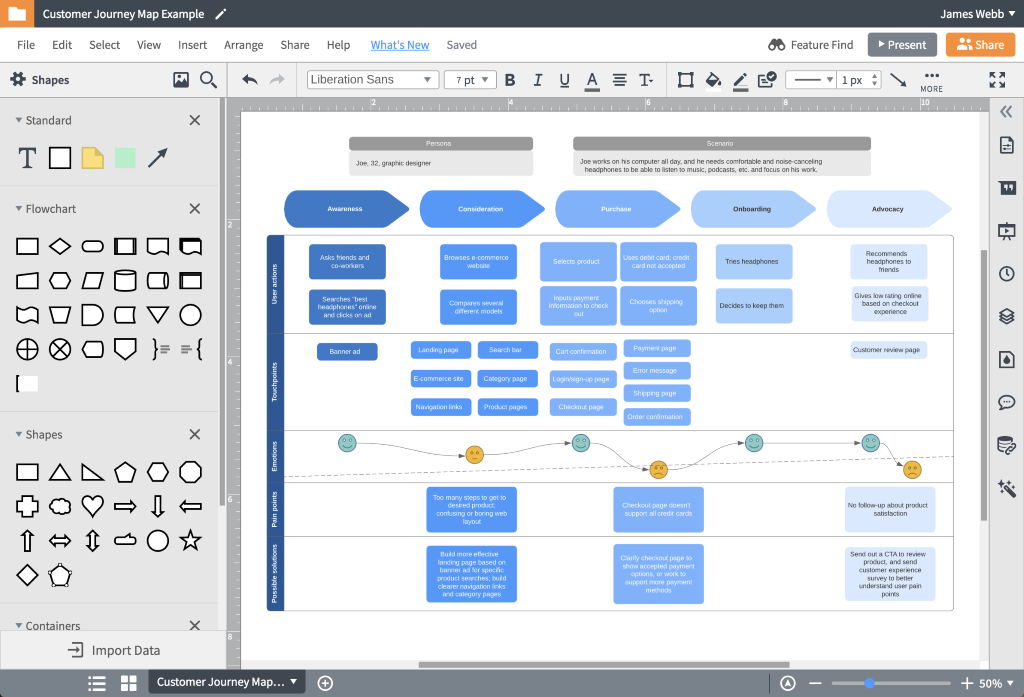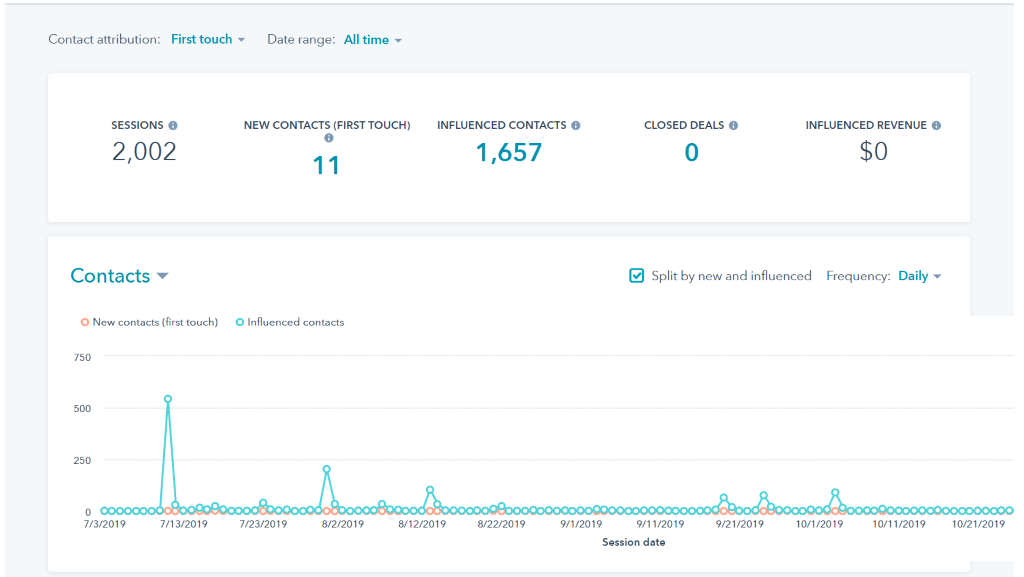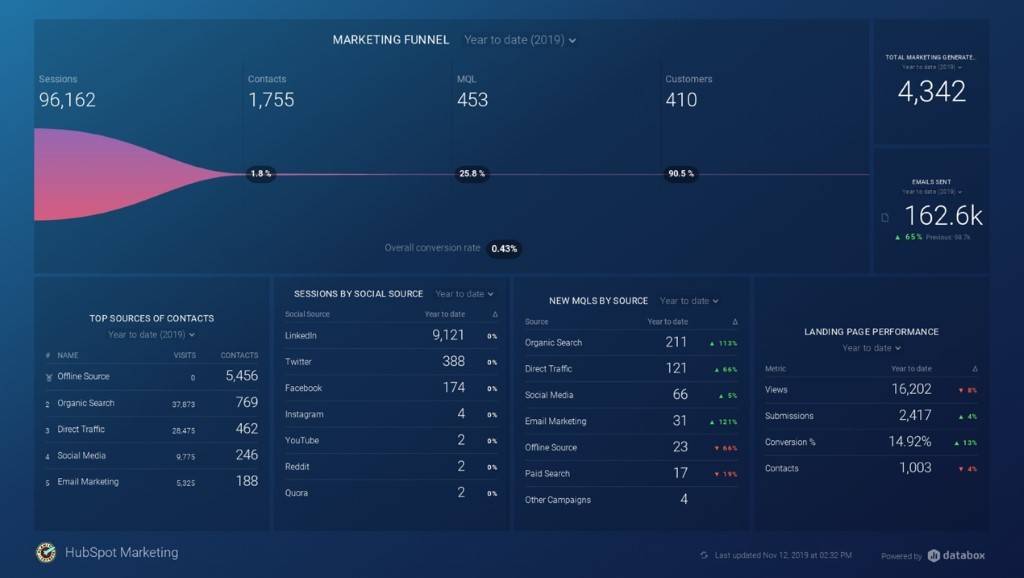5 Steps to Implement Integrated Marketing in B2B Furniture & Textiles
Your sales team knows who they want to close, so how do you get your products in front of the most influential designers and retailers to boost your revenue?
Studies have proven that “More than 70 percent of B2B buyers fully define their needs before engaging with a sales representative, and almost half identify specific solutions before reaching out” (CSO Insights, 2018) – which means you need to educate your prospects with your marketing channels before salespeople ever even step into the scene.
Have you considered integrated marketing? It’s the process of strategically arranging your marketing channels and assets to work in sync so that they are all aligning for a single purpose: to boost your brand and increase revenue. Basically, an integrated marketing plan will deliver a unified message to your audiences through a multi-channel approach of attracting the right prospects.
We know that sounds very much of a “pie in the sky” approach for many people. So, what does integrated marketing actually look like for B2B furniture and textile marketers, and how can executives make it work together and prove ROI?
1. It All Starts by Mapping Out the Customer Experience
To increase revenue and boost ROI, you have to start with goals and work backwards. The same goes for a marketing plan: you must keep the end in mind and build a road map for your prospects to get there.
That’s where customer mapping comes in. Customer mapping is simply drawing out the user experience or user journey that you want your prospects to take. Essentially, you’re determining how you’ll get a prospect to move through your assets from lead all the way to becoming a customer and coming back again for more opportunities.
Here are 4 components to have in place before you map things out:
A. Set clear goals + objectives WITH YOUR FULL TEAM
You need to have something for your prospects to do! Have a brainstorming session and include both sales and marketing teams to determine clear goals and key performance indicators that will guide you when you begin to map out how to get them to do your specific action.
B. Develop and determine personas to understand customer needs
You should know your ideal buyers (major customers) and influencers (designers or other 3rd parties) to any product line. Hopefully you’ve already built those out – but if you need a more in-depth look, check out 5 Reasons to Use Personas in the Furniture Industry. Although some may overlap, each persona has different pain points, needs, where they spend time online, etc. Be sure to choose who you’ll be focusing on and create a map for each particular persona on the campaign.
PRO TIP: You can use the same assets throughout multiple personas. Your one blog could be promoted on three different platforms differently based on the persona you’re planning to target!
C. Ensure you have necessary resources in place
You don’t want your prospect to get halfway through a journey and then get stuck at a stop sign with no clear path ahead. Make sure you have all of your content, collateral, email sequences, or anything you need in place so that it’s a seamless experience for the user.
Don’t get overwhelmed: you can launch parts of a campaign to get things moving, then revisit and add as you build collateral.
D. Draw it out!Customer mapping specifically can be set up with a user-friendly tool like Lucidchart or a more advanced one like Funnelytics. In these cloud-based tools, you can visualize your customer journey map that creates if/then scenarios, determining for example, "If they visit this blog, where do I want them to go next? Is it a rich content download, another blog, a pillar page, etc.?”
This is helpful for identifying content gaps and user journey yield signs. The more you can help your prospect self-educate, the more ownership they feel over their decision – which gives them confidence in YOUR products or services.
 (Source: LucidChart)
(Source: LucidChart)
2. Reach Your Customers Everywhere They Are
Choose the areas to focus on to reach your audience. From events to email to social media, you have a lot of options for B2B marketing, so strategically decide where your prospects will spend the most time (which goes back to persona development).
Within customer mapping, knowing your personas and reaching them where they are is an imperative aspect of your plan. Many manufacturing companies don’t believe that social media has value for marketing, but social campaigns can help your B2B marketing efforts!
It’s important to remember that each one of your prospects wakes up a consumer.
If you think your buyers or designers aren’t waking up and scrolling social media, think again. By generation: 90.4% of Millennials, 77.5% of Gen X, and 48.2% of Baby Boomers are active on social media (eMarketer, 2019).
But social media isn’t the only way to reach your ideal prospects. Think about their daily activities:
- Where do they spend their time doing research for work, and what other types of content do they scroll?
- What types of emails resonate with them?
- Do they remember you after a trade show?
- How do you stay top of mind when they’re making purchasing decisions or recommendations to clients?
- Are you staying relevant in the trends: both within your industry and in the digital space?
Choose your channels wisely, and keep in mind the relevance of your product from supply chain to the consumer. All of those elements will determine how you effectively reach your audiences and increase revenue quarterly, yearly, and beyond.
3. Create an Integrated Plan
Traditionally, we’ve relied on major markets in cities from Las Vegas to High Point to keep the sales funnels moving in the furniture industry. Yet as we move forward in this digital era, we have the opportunity to reach more prospects year-round in addition to in-person events.
Besides, when was the last time you made a decision on an email alone?
Enter integrated marketing. It’s where you think about your customer at the center of all that you do, and then expand your marketing and sales outwardly with multiple channels to reach them where they are through multiple touchpoints so that your brand becomes top of mind as they make purchasing decisions. Keep in mind, it all goes back to knowing your personas and choosing the right channels to reach them, so the plan looks different depending on your customer journeys. See how it’s all connected?
No matter what channels you choose, remember that your messaging must be unified across all of them. Your prospects should recognize that you seem to be popping up everywhere with a clear message about how your products benefit them. If you do it strategically and effectively, you won’t be annoying them, but providing helpful content that will make them realize they want to partner with you.
Here’s an example:
- You go to HPMKT and collect 100 new leads that are entered into your CRM via tag scan. Based on your data, you determine that:
-
-
- 30 are ideal buyers,
- 15 are influential designers, and
- the other 55 are not a good fit as prospects (for now)
-
- You put all of your new leads into an email sequence thanking them for attending and providing high-level information about your company and products and encouraging them to learn more. You can set this up to be sent directly from sales reps within your marketing automation software so that they can reply directly back if they need help placing an order.
-
-
- Here’s the start of your customer map: come up with a separate journey for ideal buyers, designers, and then a general campaign for brand awareness.
- Here’s the start of your customer map: come up with a separate journey for ideal buyers, designers, and then a general campaign for brand awareness.
-
- To bring in other channels and unify your messaging, think up a creative theme to catch prospects’ attention – and make sure you include marketing and sales teams on the plan.
- Create content pieces that educate your prospects centered around that theme (blogs, tech sheets, infographics, etc.).
- Run account-based marketing ads targeted towards the top accounts that you’ve chosen. Make sure the ads direct to a specific landing page for the campaign, not just your main website. Keep them moving down the journey you’ve mapped out.
- Run retargeting ads for anyone visiting certain pages on your site. This will bring back net new visitors and anyone who already came to the site via your original email campaign.
- Post on your social platforms to point viewers to your content – be sure to have a clear brand voice and be consistent in your posts to show value and differentiate your products & services.
- Hold regular smarketing meetings so that sales and marketing teams can keep each other in the loop about prospect activity and deals in the pipeline.
If you keep all of these pieces moving, you’ll be well on your way to boosting revenue from just that one trade show while using the same channels and collateral to bring in new prospects into the pipeline.
4. Measure Your Campaigns
Is all of this worth it? You won’t know unless you measure your marketing ROI.
Measuring campaigns helps you understand where your spending and efforts are going, and analytics can help you understand ROI and more. Just make sure you tie it back to your original goals to understand what you’re measuring and why.
Make sure your CRM is configured effectively to keep your sales reps in the loop so that you’re continually aligning sales and marketing efforts. For marketing, be sure that all of your tools connect – a full suite like HubSpot that includes CRM, Marketing, and Service is great for this, but other tools can be integrated with the right set up.
With HubSpot, you can build full campaigns and see live dashboards on results, from website analytics to open and click-through rates on emails to ad impressions and clicks. With HubSpot’s custom Attribution Reporting, you can have flexibility to analyze exactly what you need.

Another way to aggregate a lot of metrics in a simple yet powerful visual is through Databox, a tool that pulls from multiple data sources and provides live results of your marketing, sales, and business analytics.

Measure, measure, measure. Pull regular reports. Analyze what’s happening and what you can do better to increase efficiency for your marketing and sales teams. With the right processes in place – yes, it’ll be worth it.
5. Iterate and Adapt
Once you have an integrated marketing engine in place, it definitely feels like a relief! Whether you’re doing it alone, with a team, or in partnership with an integrated marketing agency, building great campaigns is tough work. But the work isn’t over – you should always be adjusting, adapting, and changing your campaigns based on your ever-changing sales goals and company initiatives.
As you build efficient automation into your integrated campaigns, do not just “set it and forget it.” It’s imperative that your team continues to stay ahead of the trends within digital marketing and how your campaigns connect to the B2B furniture industry as a whole.
Review your marketing campaigns regularly to see how they’re performing and update them as needed. Then, build new campaigns, add new channels to existing campaigns, or try a different ad platform to see what’s the most effective.
Check out our Culp Home Fashions Case Study that examines an integrated campaign with a strong website at its core.

